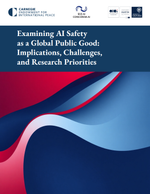Scientific Reports
Wamil, M., Hassaine, A., Rao, S. et al. Stratification of diabetes in the context of comorbidities, using representation learning and topological data analysis. Sci Rep 13, 11478 (2023). https://doi.org/10.1038/s41598-023-38251-1
View Journal Article / Working PaperDiabetes is a heterogenous, multimorbid disorder with a large variation in manifestations, trajectories, and outcomes. The aim of this study is to validate a novel machine learning method for the phenotyping of diabetes in the context of comorbidities. Data from 9967 multimorbid patients with a new diagnosis of diabetes were extracted from Clinical Practice Research Datalink. First, using BEHRT (a transformer-based deep learning architecture), the embeddings corresponding to diabetes were learned. Next, topological data analysis (TDA) was carried out to test how different areas in high-dimensional manifold correspond to different risk profiles. The following endpoints were considered when profiling risk trajectories: major adverse cardiovascular events (MACE), coronary artery disease (CAD), stroke (CVA), heart failure (HF), renal failure (RF), diabetic neuropathy, peripheral arterial disease, reduced visual acuity and all-cause mortality. Kaplan Meier curves were plotted for each derived phenotype. Finally, we tested the performance of an established risk prediction model (QRISK) by adding TDA-derived features. We identified four subgroups of patients with diabetes and divergent comorbidity patterns differing in their risk of future cardiovascular, renal, and other microvascular outcomes. Phenotype 1 (young with chronic inflammatory conditions) and phenotype 2 (young with CAD) included relatively younger patients with diabetes compared to phenotypes 3 (older with hypertension and renal disease) and 4 (older with previous CVA), and those subgroups had a higher frequency of pre-existing cardio-renal diseases. Within ten years of follow-up, 2592 patients (26%) experienced MACE, 2515 patients (25%) died, and 2020 patients (20%) suffered RF. QRISK3 model’s AUC was augmented from 67.26% (CI 67.25–67.28%) to 67.67% (CI 67.66–67.69%) by adding specific TDA-derived phenotype and the distances to both extremities of the TDA graph improving its performance in the prediction of CV outcomes. We confirmed the importance of accounting for multimorbidity when risk stratifying heterogenous cohort of patients with new diagnosis of diabetes. Our unsupervised machine learning method improved the prediction of clinical outcomes.




